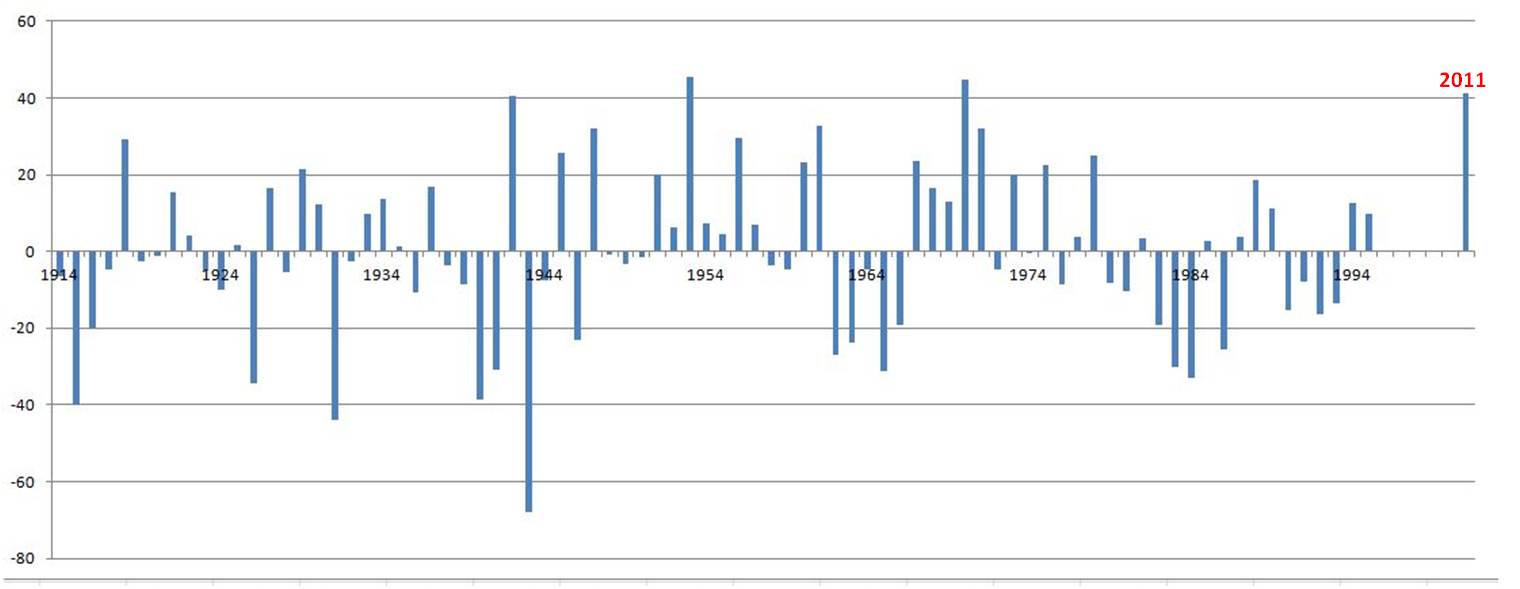A few days ago I suggested that the primary cause of flooding in Thailand this year is exceptionally high rainfall. While not denying “man-made” issues, such as dam management, I argued that insufficient attention is given to the very high rainfall that has fallen throughout the Chao Phraya catchment. To support my argument I provided some graphs comparing 2011 rainfall (January – September) with the historical averages for a number of locations in northern Thailand.
As some readers have comments, simply comparing 2011 rainfall with the average does not give a good idea of just how exceptional (or not) 2011 has been. This is a very good point, and I am collecting some historical data to explore this issue.
Here is a very preliminary analysis based on some historical data that I have for Chiang Mai, from 1914 to 1995. I obtained these data about 10 years ago from the Royal Irrigation Department.
The average for January-September rainfall over this period was 971 millimetres. The graph shows the year by year variation from the average (click for a larger image). So, 1915 was about 40 percent below average, while 1918 was about 30 percent above average.
2011, shown on the far right of the graph has been about 42 percent above average for January to September. It is easy to see from the graph that this is exceptional, occuring only in 1942, 1953, and 1970.
For flood watchers in Thailand 1942 should ring a bell. If it doesn’t, this is a good reminder:
Of course, just because there is heavy rain in Chiang Mai, doesn’t mean it will flood in Bangkok. I’ve had a quick look but I haven’t been able to find references to flooding in Central Thailand in 1953 or 1970. What seems particularly exceptional about 2011 is that rainfall has been well above the average in many areas throughout the Chao Phraya catchment. As I reported in my previous post, 2011 rainfall in Lamphun has been 96 percent above average, in Lampang 77 percent above average, in Uttaradit 53% above average and in Phitsanulok 46% above average.
I will try to explore the extent to which this has occurred before in another post some time next week.
This is some very preliminary analysis of only one data series. But it does suggest that some more attention to the exceptionally high levels of rain that have fallen during the 2011 wet season – rather than jumping too quickly to the politics of blame – may be warranted.
 Facebook
Facebook  Twitter
Twitter  Soundcloud
Soundcloud  Youtube
Youtube  Rss
Rss 
